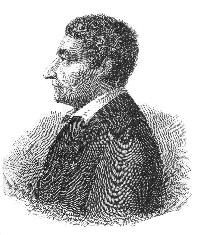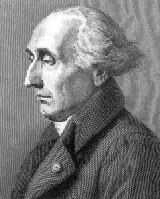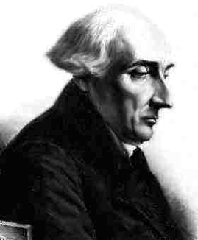 Joseph Louis Lagrange is usually considered to be a Frenchman, however he was actually born in Turin, Italy in 1736. Lagrange, the eldest of 11 children, only two of which to live to adulthood, was baptised in the name of Giuseppe Lodovico Lagrangia. Due to his French connections on this father’s side, Lagrange always thought of himself as a Frenchman; he even used the French form of his true family name. Later, Lagrange studied towards a career in Law at the College of Turin, where his favourite subject was classical Latin. Lagrange chose to make a career for himself in mathematics after reading a copy of Halley’s 1693 work on the use of algebra in optics. Joseph Louis Lagrange is usually considered to be a Frenchman, however he was actually born in Turin, Italy in 1736. Lagrange, the eldest of 11 children, only two of which to live to adulthood, was baptised in the name of Giuseppe Lodovico Lagrangia. Due to his French connections on this father’s side, Lagrange always thought of himself as a Frenchman; he even used the French form of his true family name. Later, Lagrange studied towards a career in Law at the College of Turin, where his favourite subject was classical Latin. Lagrange chose to make a career for himself in mathematics after reading a copy of Halley’s 1693 work on the use of algebra in optics.
After making this decision, Lagrange did most certainly devote himself to mathematics, and in 1754 he published his first mathematical paper in the form of a letter. This work showed that Lagrange was working alone without the aid of a mathematical supervisor. In this letter he drew an analogy between the binomial theory and the successive derivatives of the product of functions. After publishing the paper Lagrange found that the results appeared in correspondence between Johann Bernouli and Leibniz. Lagrange feared being branded a cheat and a thief who copied his results from others. This set-back only caused Lagrange to redouble his efforts and began work on the tautochrone. Euler replied to a letter from Lagrange in late 1755 remarking how impressed he was with Lagrange’s new ideas. Despite being 19 years old Lagrange was appointed professor of mathematics at the Royal Artillery School in Turin. |
|
Lagrange was a founding member of what would become the Royal Academy of Science of Turin. The Society published a scientific journal Melanges de Turin, of which Lagrange was the major contributor. These contributions included Lagrange’s results on the calculus of variations, calculus of probabilities and the foundation of dynamics. He based his work on the principle of least action and kinetic energy. In the Mélanges de Turin Lagrange also made a major study of the propagation of sound. He made important contributions to the theory of vibrating strings. In the third volume Lagrange published his work on the integration of differential equations and methods of solving systems of linear equations. One problem he applied his methods to was the study of the orbits of Jupiter and Saturn. |
|
Lagrange’s work in Berlin covered many topics including astronomy, dynamics, the stability of the solar system, mechanics, fluid dynamics, probability, number theory and the foundations of calculus. In 1770 Lagrange proved that every positive integer is the sum of four squares and made an investigation into why equations of degree up to 4 could be solved by radicals. He also proved that a number n is prime if and only if (n –1)! +1 is divisible by n. |
|
|
|
Quotation “Before we take to sea, we walk on land, |
 In 1756 Lagrange sent Euler results that he had obtained by applying the calculus of variations to mechanics. These results generalised results that Euler had himself obtained, as a result Euler consulted Maupertuis about Lagrange. Maupertuis tried to entice Lagrange to a new position in Prussia. However, Lagrange was not interested in the prestige that would be found in such a position, his only concern was to be able to devote himself to mathematics, so he declined the position.
In 1756 Lagrange sent Euler results that he had obtained by applying the calculus of variations to mechanics. These results generalised results that Euler had himself obtained, as a result Euler consulted Maupertuis about Lagrange. Maupertuis tried to entice Lagrange to a new position in Prussia. However, Lagrange was not interested in the prestige that would be found in such a position, his only concern was to be able to devote himself to mathematics, so he declined the position.
 Lagrange accepted Euler’s position in the Berlin Academy after Euler left for St Petersburg. He was greeted warmly by most members of the academy, and soon became close friends with Lambert and Bernoulli. However, Castillon was not pleased to see a man 32 years his junior appointed Director of Mathematics. Soon after arriving in Berlin, Lagrange married his own cousin, Vittoria Conti. Their marriage bore no children.
Lagrange accepted Euler’s position in the Berlin Academy after Euler left for St Petersburg. He was greeted warmly by most members of the academy, and soon became close friends with Lambert and Bernoulli. However, Castillon was not pleased to see a man 32 years his junior appointed Director of Mathematics. Soon after arriving in Berlin, Lagrange married his own cousin, Vittoria Conti. Their marriage bore no children. Lagrange left Berlin to become a member of the Académie des Sciences in Paris after the death of his wife in 1787. The move was advantageous for Lagrange as the offer meant that he would have no teaching duties, thus giving him more time to spend on his studies of mathematics. Soon after arriving in Paris, he began work on his comprehensive work on the field of mechanics since the time of Newton, The Mécanique Analytique, published in 1788.
Lagrange left Berlin to become a member of the Académie des Sciences in Paris after the death of his wife in 1787. The move was advantageous for Lagrange as the offer meant that he would have no teaching duties, thus giving him more time to spend on his studies of mathematics. Soon after arriving in Paris, he began work on his comprehensive work on the field of mechanics since the time of Newton, The Mécanique Analytique, published in 1788.